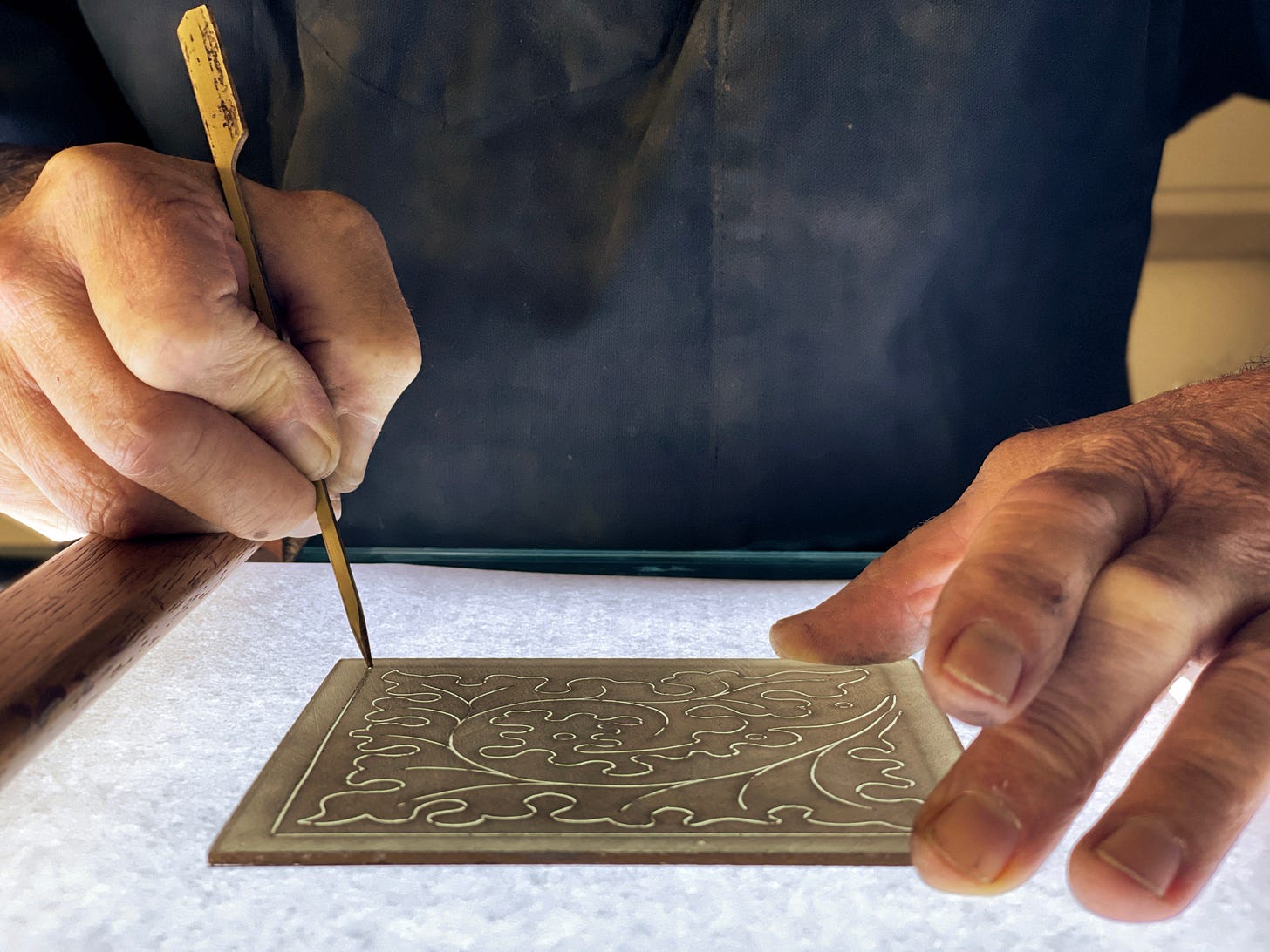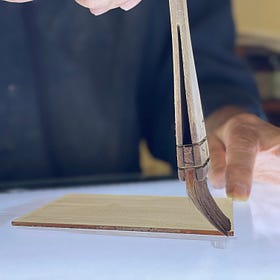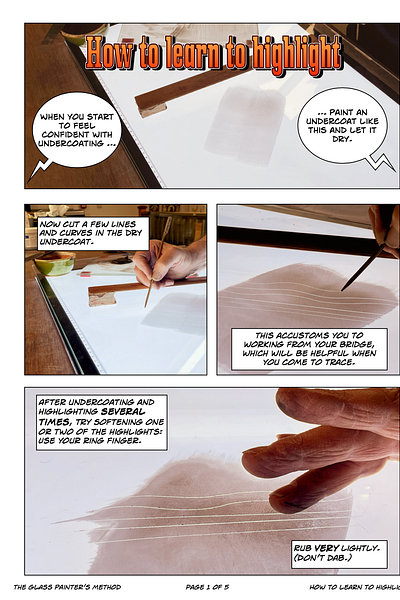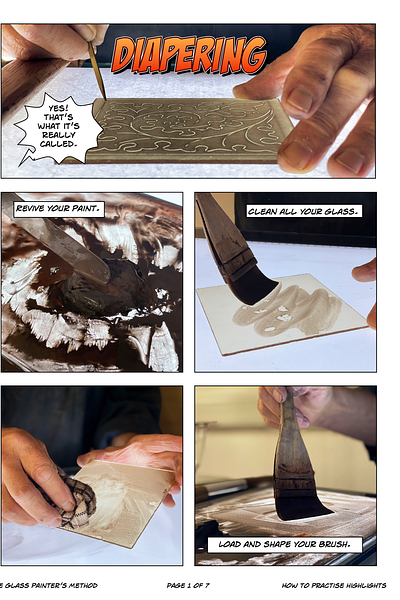Techniques
Letter 5: in which I tempt the newcomer to linger with the undercoat (and not rush on to tracing)
Did you imagine I wouldn’t pester you with work, those of you who want it? (I am specifically addressing the newcomers who read this letter, which includes my daughter who is now home for summer after her first year at college.)
Last time, we spoke at length about the undercoat like this:
Techniques
The more confident the newcomer becomes with the undercoat, the more understanding he will acquire of the character of glass paint; which understanding is the true foundation from which his fluency in glass painting will spring.
There are two players in this game: the professional glass painter on the one hand, and, on the other, the newcomer who seeks to learn, and who asks the glass painter all kinds of well-intentioned but often ill-judged questions.
My hypothesis is, the glass painter is frequently too embarrassed to admit how substantially his success depends on “dirty water” (to use Whall’s phrase).
At the same time, the newcomer is in such a rush to trace that the glass painter almost cannot help but seize this opportunity to neglect the undercoat as if it were some bastard child from Victorian literature, and grant the newcomer his frenzied wish.
This bare-faced bait-and-switch spares the glass painter a whole storm of blushes. The sadness of the matter is, it does not serve the newcomer’s best interests.
I, however, am no more embarrassed by the undercoat than a mechanic is by the ordinariness of his spanner. I am shameless in insisting the newcomer doesn’t just begin with the undercoat but remains there until such time as he admires its riches.
If you still need evidence of the undercoat’s potential, I beg you to review last week’s slow-motion video, which was available to everyone, not just to paid subscribers, and is greatly worth your time for the benefits it reveals.
That video, however, was theory; today it’s time to cash in. Starting today, the newcomer, by practising and experiencing how to highlight, will find himself rehearsing the same tracing which he’s so keen to get to — and which he or she will get to, but not for some time yet.
Here are some notes I hope you will find helpful:
Also, here are three videos which demonstrate the process for newcomers to practise.
There’s no commentary: each video is short enough you can return and watch it again, each time observing different things you might not have consciously observed before.
The first video shows how to practise highlighting on the light box:
The second video shows how to practise highlighting on bits of glass:
The third video shows how to copy from a design:
Here are the designs:
For the newcomer’s further joy and seduction, here is a pair of more complicated designs which we adapted from the windows at Alton Towers whose restoration is the subject of my other strand of letters to you:
See the top shield here — it contains the pattern, the diapering, which is the subject of the download:
Think of it: a newcomer is hereby empowered to forge delightful sections from a long-neglected 19th century masterpiece — that’s what our method quickly gets the beginner to accomplish. Which accomplishment renders him or her useful in a painting studio, should that be the wish.
Or, if not, the newcomer has already begun to stake out an understanding of how it is that stained glass painting works — it does not work at all like pencil on paper or oil on canvas — which would not have been achieved by hastily jumping in with tracing.
Godspeed until the next time that we correspond when, in a fortnight, it’s back to restoration. I think we’ll look at brushes and the different method each brush demands to load it. But don’t hold me to it — as you’ve seen, I can be fickle when it comes to choosing topics.









Thank you for this class!
I sometimes need to steady my shaky right hand with my left while cutting highlights, but the piece of glass tends to move around on the light box if I am not holding it. So I bought a roll of tool chest drawer liner, which is a perforated rubbery material meant to grip whatever implements are set on it. I cut a sheet about one foot square, and cut a window in it to work over, which is about half the size of the glass piece. As long as I do not apply excessive pressure while highlighting, the glass does not budge even though I am not holding it. I don't know if this might be of help to anyone else, but I find it handy at times.